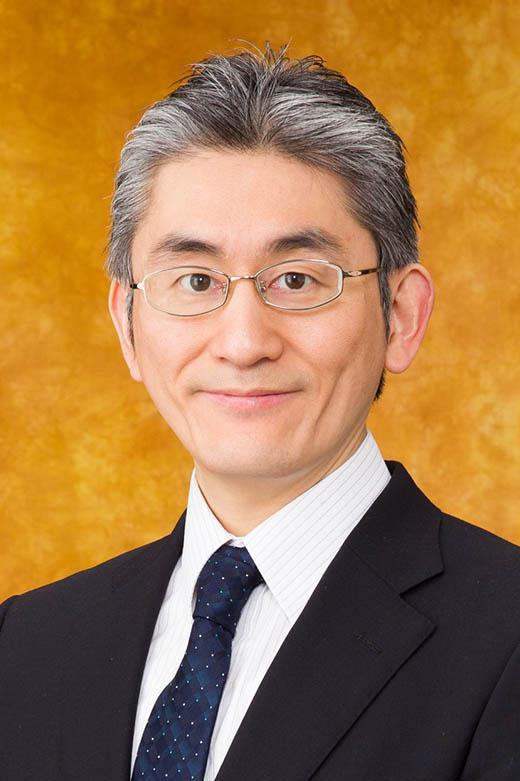September 2017 Issue
Feature
Frontiers of audiology: Quest to find effective solutions to support people with hearing loss
Takuji Koike,
Professor, Department of Mechanical and Intelligent Systems Engineering,
The University of Electro-Communications, Tokyo.
Takuji Koike is collaborating with medical doctors in Japan to clarify the origins of auditory problems as well as developing devices to support people suffering from hearing loss. "We are focusing on three main areas," says Koike. "Gaining insights into the mechanisms governing hearing disorders for the development of effective treatments; measuring the response of fetuses to sound; and developing hearing aids that are implanted into the bone behind the ear."
Specific projects
Modelling of auditory systems
Effective modelling is important to clarify the mechanisms of hearing disorders for the development treatments that cannot be studied by clinical research.
Koike and colleagues have devised numerical middle ear models and cochlear models for active motilities of the outer hair cells. Simulations are used to analyze vibrations of the lymph liquid and basilar membrane in the cochlea and clarify transmission mechanisms in the peripheral auditory systems. The simulations were used for clinical applications where the mechanisms of hearing losses caused by otosclerosis , perilymphatic fistula, and endolymphatic hydrops [1,2,3].
Measurement of auditory evoked response in fetus
One in eight hundred people in Japan suffer from congenital hearing loss that can lead to impairment of language development and handicap for clear conversation. In this research, Koike is working with medical schools in Japan to measure variation in the heart rate and brain waves of fetuses induced by vibratory stimulation applied to maternal abdominal wall. Initial experiments showed positive reactions from approximately 90% of the fetuses who were confirmed to have normal hearing after birth [4]. The set up consists of a piezoelectric vibrator to produce the sound and Doppler ultrasound device to detect changes in the heart rate.
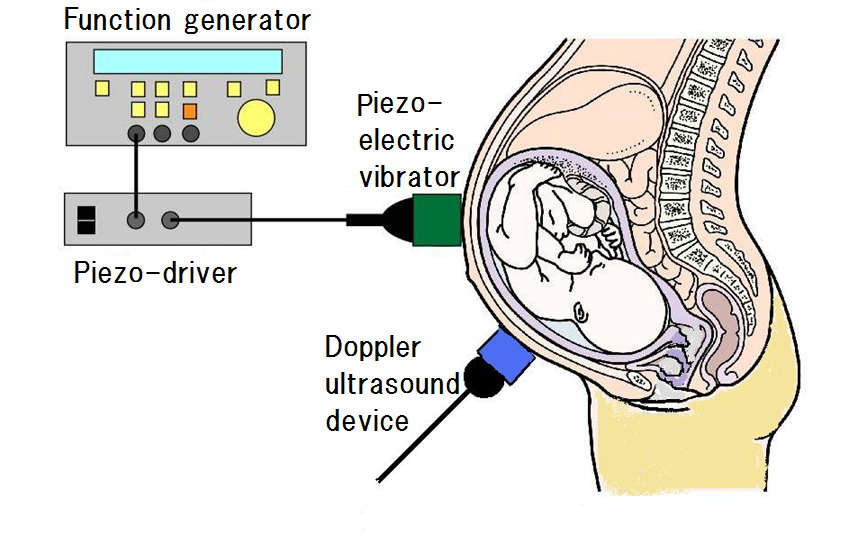
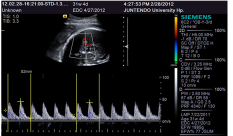
Development of implantable bone conduction hearing aids
Koike's group has developed prototype bone-conduction hearing aid using Giant Magnetostrictive Material (GMM) vibrators. Improvements in the design of the vibrator and method of transdermal signal transmission yielded a device with higher efficiency compared to the existing bone-conduction hearing aids. "We have obtained a European patent for the basic specifications and operating function of the hearing aid and are working with a company to develop practical hearing aids," says Koike.
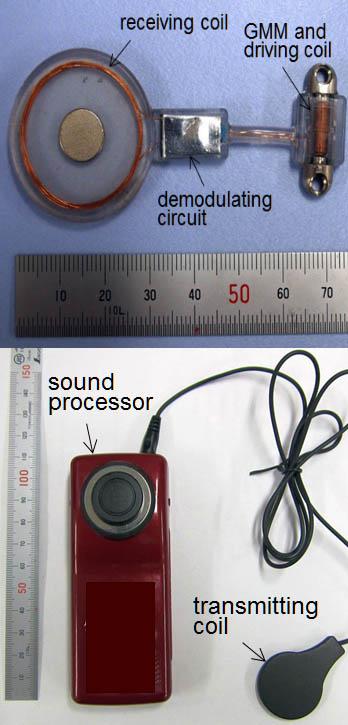
Development of instruments to assist auditory surgeons during operations
Instruments for measuring ossicular mobility has been developed, and the ossicular mobility in patients has been measured during tympanoplasty. Some prototypes were built and tested in collaboration with medical equipment makers and medical institutions. This work was supported by Saitama Leading Edge Project (Medical Innovation).
"In the future, we will continue to develop ideas and instruments to improve the quality of life of people with auditory system problems," says Koike.
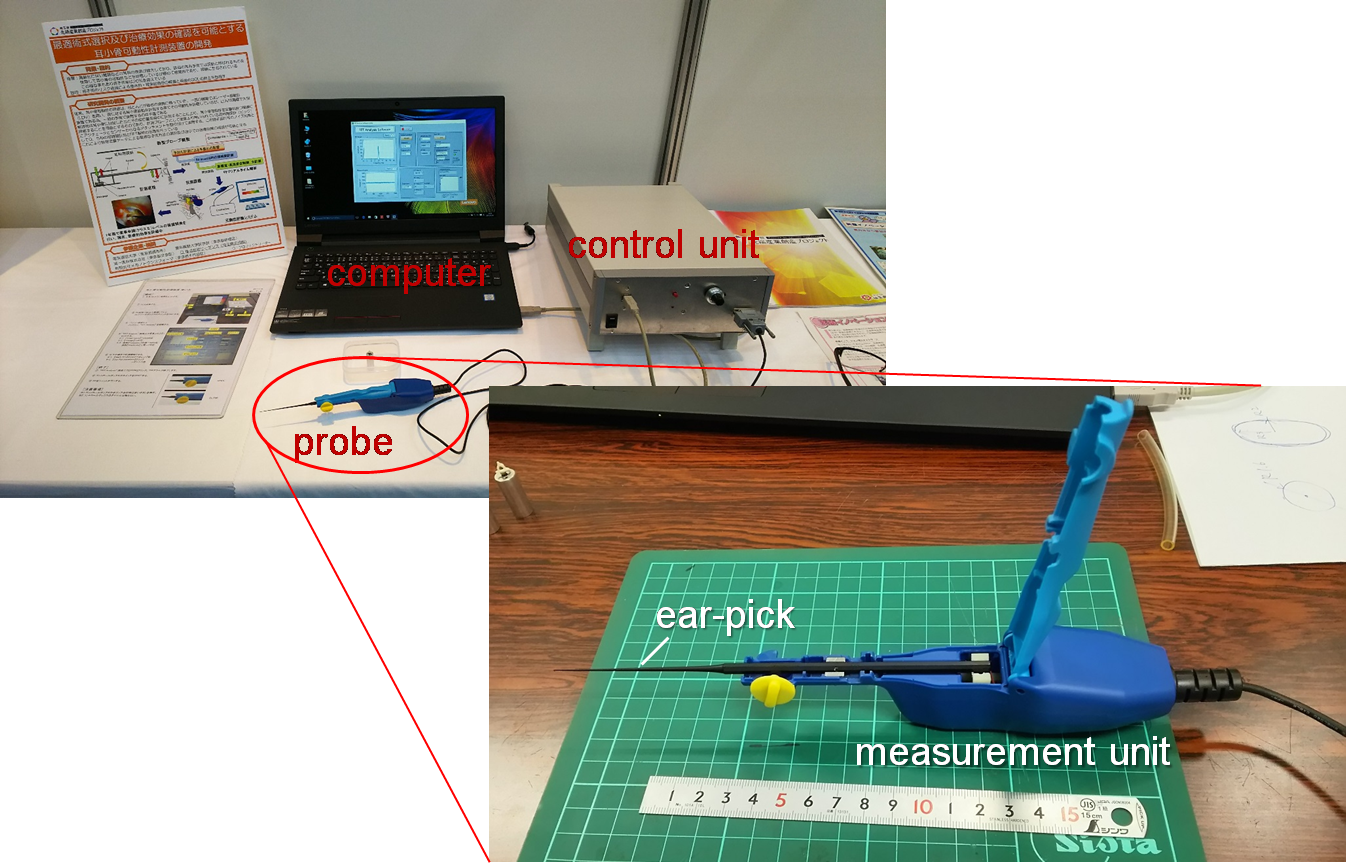
References and further information
- [1] Takuji Koike, Hiroshi Wada, Toshimitsu Kobayashi, Modeling of the human middle ear using the finite-element. Method, J. Acoust. Soc. Am. 111 (3), (2002).
- [2] Takuji Koike, et al, Effects of a perilymphatic fistula on the passive vibration response of the basilar membrane. Hear Res. 283(1-2), 117-125 (2012)
- [3] Sinyoung Lee and Takuji Koike, Simulation of the Basilar Membrane Vibration of Endolymphatic hydrops, Procedia IUTAM 24 ( 2017 ) 64 - 71.
doi: 10.1016/j.piutam.2017.08.043 - [4] Rina Matsuoka, et. al, Piezoelectric vibrator-stimulated potential and heart rate
accelerations detected from the fetus, International Journal of Pediatric Otorhinolaryngology, 101 (2017) 204e210.
http://dx.doi.org/10.1016/j.ijporl.2017.05.007 - [5] Koike Laboratory
http://www.bio.mce.uec.ac.jp/



